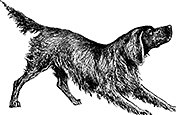How to draw a dragon.
Use Adobe Fresco to bring your very own dragon to life with this step-by-step guide.
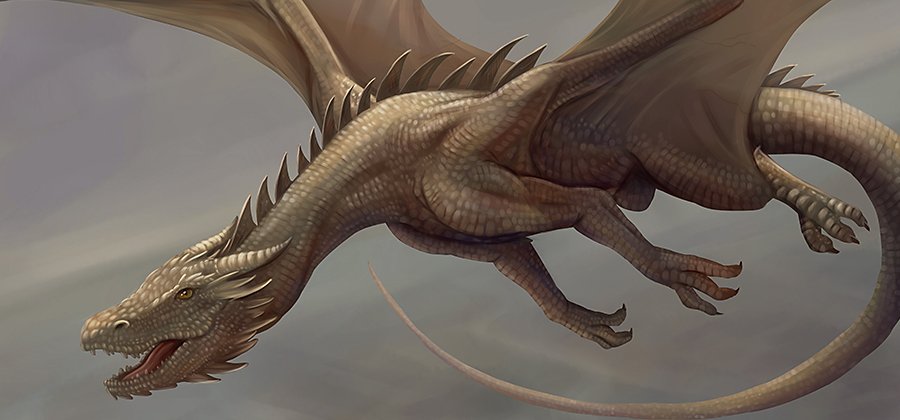
Fiction, not fact.
No fantasy setting is complete without dragons. From Game of Thrones to The Hobbit, adding dragons to a story helps reinforce the notion that in this world, anything is possible. Dragons come in so many different colours, shapes and sizes; it may be hard to know where to begin when illustrating one. Follow these simple steps to take off in dragon drawing.
Drawing inspiration.
“The possibilities are endless with dragons,” says illustrator Loe Lee. Unlike a unicorn, a magical creature based on a real-life animal, dragons don’t always have a frame of reference. Dragons may be drawn differently depending on different cultural influences. Chinese dragons and wyverns are both technically dragons, but being from Asia and Europe, respectively, they look utterly distinct from each other.
“I think dragons are a great subject matter to draw, but it can be intimidating because where do you even start with them?” says artist Jade Merien. There’s no right answer. However, you can take certain steps before you begin that will put you on the right track.
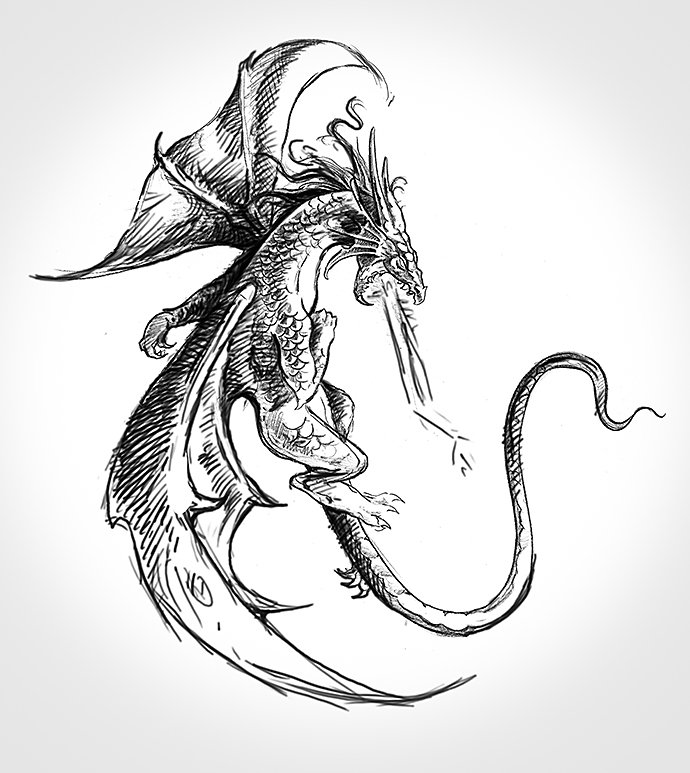
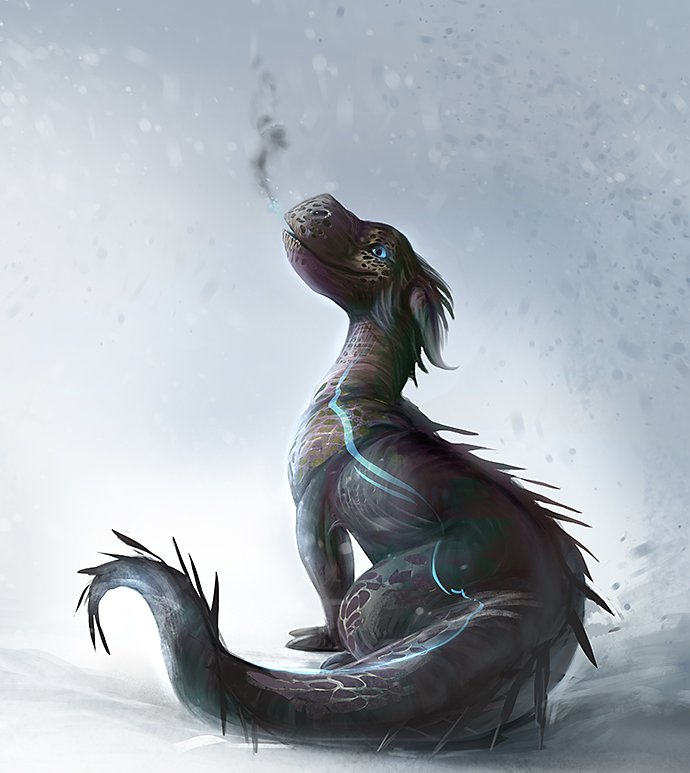
How to prep your dragon.
“Ahead of time, think about what type of dragon you want to draw,” says Merien. Do you want to draw something cute like a cartoon dragon or do you want to draw a ferocious beast like Smaug from The Hobbit? Is it a longer Chinese dragon or a more western, Game of Thrones-style dragon? Figure this out ahead of time to save yourself some design trouble.
Know your anatomy.
“A dragon is a composite of many different animals that you already recognise, but then you add your own creativity to it,” Lee says. Base your dragon wings on bats. Make your dragon head reminiscent of a crocodile. Have the dragon’s body look more lizard-like. Mix and match influences to draw a completely original dragon that’s never been seen before.
A head with a mane or horns, a strong neck or a long tail could go a long way to create your own dragon look that feels familiar but uniquely yours. Not every dragon has wings, but all dragons fly. Wingless Chinese dragons with snake-esque bodies have been around for centuries. Generally, most dragons have two to four limbs, but see what works best for your style. Feel free to use other animals as inspiration, like a Tyrannosaurus rex.
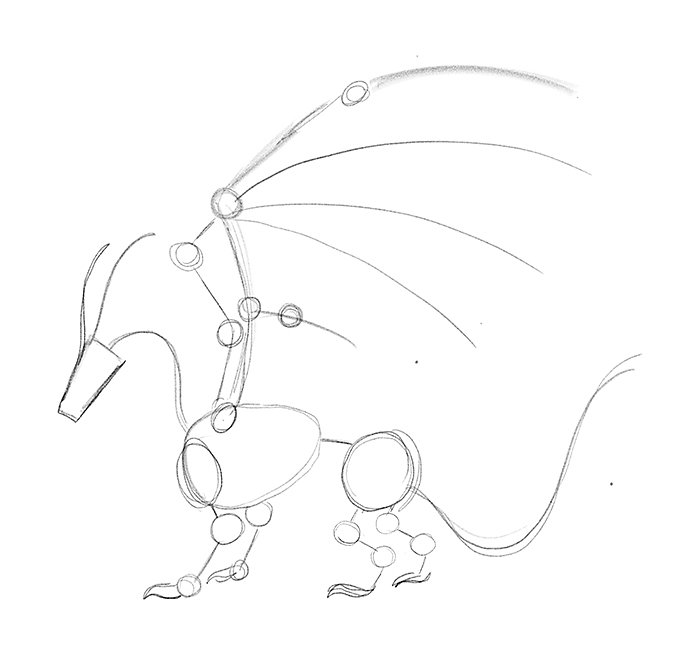
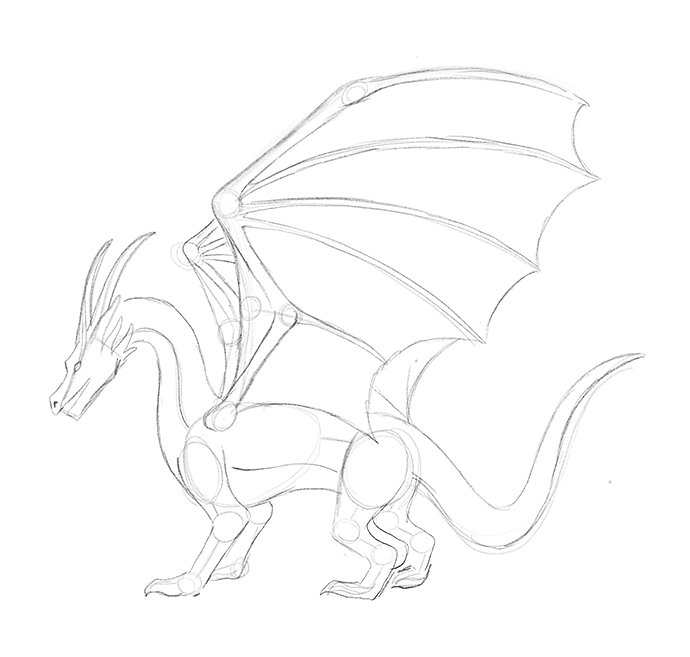
Images by Loe Lee
Simple lines for complex creatures.
After you determine what animals your dragon will take after, make a rudimentary framework of what the dragon will look like with basic shapes that combine the simple anatomy of your influences. Don’t add too much detail; you only need quick sketches. Use them to figure out the proportions of your image, the pose of the dragon, how long the tail will be etc. Curved lines work well when drawing dragons as they play up their serpentine nature.
“Doing those quick little gesture sketches, without going into any detail, is going to give you a very powerful form,” Merien says.
For simplicity, start with a rectangle to mimic the dragon’s head, wider at the base and thinner at the nose. Use circles of varying sizes to simulate joints, like those of the wings. Use a connecting line to form the basis of the spine and tail. After that, if you connect the edges of your basic shapes, you will start to see the shape of the neck, tail and torso. Fill in the dragon wings with big, swooping lines from each wingtip. Remember, you can craft each anatomical section to correspond with a real-world animal and use that as a reference for the structure of your dragon.
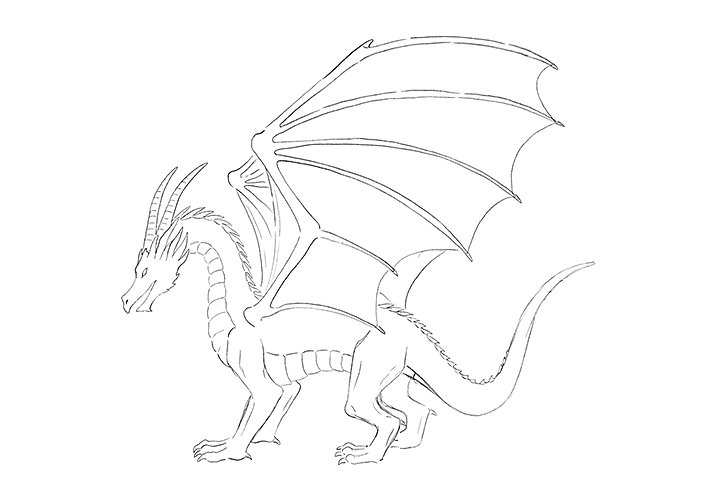
Image by Loe Lee
The devil is in the details.
Once you’ve followed the steps above, you should start to see the basis of your own dragon. Next, fill in the body curves, musculature and sharp angles of your fiery friend. Again, this is where categorising the body parts of your dragon to coincide with real-world animals is helpful. While these lovely creatures are products of our imagination, how can we make them look as realistic as possible?
“When you do move on to the details stage, make sure you have muscle references, to give it believability. The whole point of studying nature is to give art believability, while not suppressing imagination,” Merien says.
Use reference photos from the animals you chose to model your dragon after to highlight the subtleties of animal bodies that you would like to incorporate into your image. This not only makes your dragon grounded in reality but also helps keep it original.
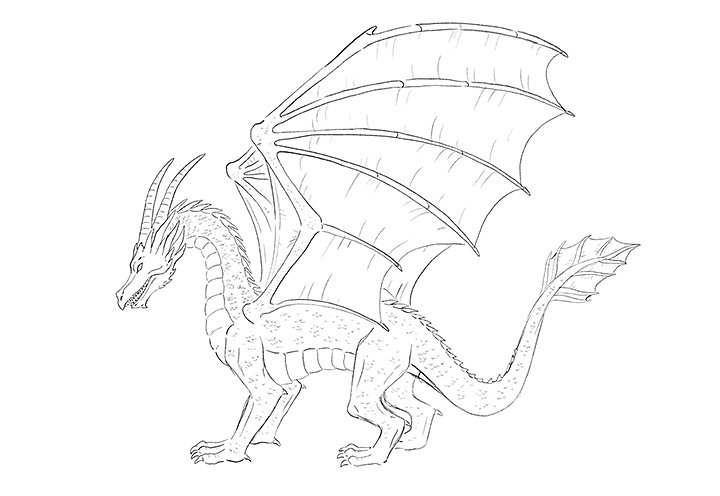
Image by Loe Lee
Add texture to seal the deal.
To complete your dragon, give it even more details, specifically textures. Add feathers, scales, horns or whatever your heart desires to fully flesh out your basilisk. Use thin lines to make up all the finer details, including the horns and the eye pupils. Add nails and claws and start shading in the appropriate areas. Again, use reference photos of a variety of animals to fill in this portion of the dragon. This will create a more accurate representation of how it would look in the wild, if it existed.
The small details you add to your dragon will set it apart from other artists’ renderings, so don’t be afraid to experiment. If you’re stuck during this phase, change the setting. Placing your dragon in a particular environment, like air or water, can help to determine what features your dragon should have.
Fire up Adobe Fresco when you want to draw.
When inspiration hits, use Fresco to hit back, no matter where you are. Start pieces on mobile and finish them on your desktop with powerful drawing tools, designed with the modern artist in mind. Learn how to draw more animals, like a dog or a wolf. Or test out your skills with the basics of figure drawing.
Contributors
Do more with Adobe Illustrator.
Create logos, icons, charts, typography, handlettering, and other vector art.
You might also be interested in…
How to draw a dog.
Learn new tricks for creating drawings that capture canine personality and emotion.
How to draw a wolf.
Capture the wild spirit of the wolf with these drawing tips.
How figure drawing can improve your illustration skills.
Dive into figure drawing to learn the foundational drawing techniques of human anatomy and form.
Learn how to draw horses.
Discover tips to take on the challenge of drawing these big, beautiful creatures.
